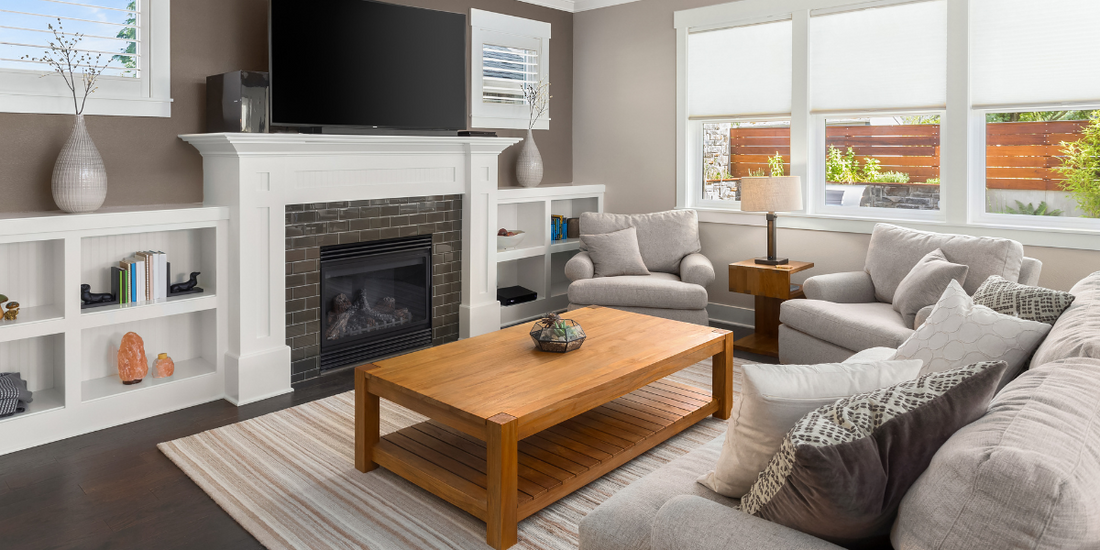
How a Whole House ERV Works: A Guide for Healthier, Smarter Homes
Share
Introduction
Indoor air quality matters more than ever. Whether you're a homeowner, builder, or HVAC contractor, understanding how a Whole House Energy Recovery Ventilator (ERV) works can help you create more comfortable, energy-efficient, and healthier homes. ERVs are increasingly becoming standard in new construction and renovations — and for good reason. They provide fresh air, reduce indoor pollutants, and help maintain optimal humidity levels without sacrificing energy efficiency.
In this guide, we’ll walk through how a whole house ERV system works, its benefits, and why a system from Vents-US might be the smart upgrade your home or project needs.
What is a Whole House ERV?
An Energy Recovery Ventilator (ERV) is a mechanical ventilation system that replaces stale indoor air with fresh outdoor air — while transferring heat and moisture between the airflows to reduce energy loss.
Unlike spot ventilation (like a bathroom fan or kitchen range hood), a whole house ERV continuously cycles air throughout the entire home. This keeps air fresh and balanced while reducing the load on your HVAC system in the summer and winter.
How It Works
A typical whole house ERV operates through the following core components:
- Supply Air Stream: Brings fresh outdoor air into your home.
- Exhaust Air Stream: Removes stale indoor air from areas like bathrooms, laundry rooms, kitchens, living rooms and bedrooms.
- Core Heat & Moisture Exchanger: Transfers heat and moisture between incoming and outgoing air without mixing the air streams.
- Fans or Blowers: Two fans move the air in and out of the house.
-
Filters: Clean both air streams, protecting the unit and improving indoor air quality.
When warm, humid air is leaving your home in summer, the ERV reduces moisture and heat from the incoming fresh air. In winter, it helps retain warmth and adds humidity to dry, cold air — saving energy and increasing comfort.
Benefits of a Whole House ERV
- Improved Indoor Air Quality: Constantly removes airborne contaminants, allergens, and odors. Can also assist with internal Co2 levels as well.
- Energy Savings: Transfers up to 70–90% of heat and moisture, reducing heating/cooling loads.
- Humidity Control: Unlike HRVs, ERVs also manage indoor humidity, especially useful in humid or mixed climates.
- Balanced Ventilation: Helps prevent pressure imbalances that can draw in pollutants from crawlspaces or attics.
-
Longer HVAC Life: Reduces strain on your heating and cooling equipment.
Whole House ERV vs HRV: What’s the Difference?
Both ERVs and HRVs exchange stale air for fresh air and recover energy. However:
- ERVs exchange heat and moisture — ideal for humid climates or homes prone to dryness in winter.
- HRVs exchange only heat — often preferred in dry, cold climates.
If you’re in a moderate to humid climate or simply want better year-round comfort, an ERV is typically the better all-in-one solution.
Where is a Whole House ERV Installed?
Most ERVs are installed in the basement, attic, or mechanical room, then ducted throughout the home — either with dedicated ductwork or integrated with the existing HVAC system.
Professional installation ensures proper sizing, balancing, and code compliance. For builders and contractors, this means happier clients and healthier buildings.
Why Choose a Vents-US Whole House ERV?
Vents-US ERV systems are designed for efficiency, reliability, and easy installation. Here’s why they stand out:
- High-Efficiency Core: Counterflow enthalpy exchangers for superior heat and moisture recovery.
- Quiet Operation: Low-noise fans make them suitable for even the quietest homes.
- Multiple Models: From small apartments to large custom homes, Vents-US has a unit that fits.
- Energy Star Rated: Many models are ENERGY STAR® certified for optimal performance.
- Easy Maintenance: Tool-free filter access and intuitive controls.
Popular SKUs:
- Vents Frigate ERV 120 – compact but powerful for smaller homes
- Vents Frigate ERV 150– ideal for mid-size to large homes
Is a Whole House ERV Worth It?
Yes — if you care about indoor air quality, energy savings, and long-term comfort. A whole house ERV is a valuable investment that pays off in healthier air, reduced energy costs, and better HVAC performance.
Many modern building codes even require mechanical ventilation systems, and ERVs provide one of the most efficient, homeowner-friendly solutions.
Final Thoughts
Whether you’re building a new home, upgrading an older one, or looking for healthier air for your family or clients, a whole house ERV from Vents-US is a smart, energy-conscious choice.
Explore our full line of ERVs and find the right fit at shop.vents-us.com. Need help choosing the right model? Contact us — we’re happy to help.
Thanks for reading!
